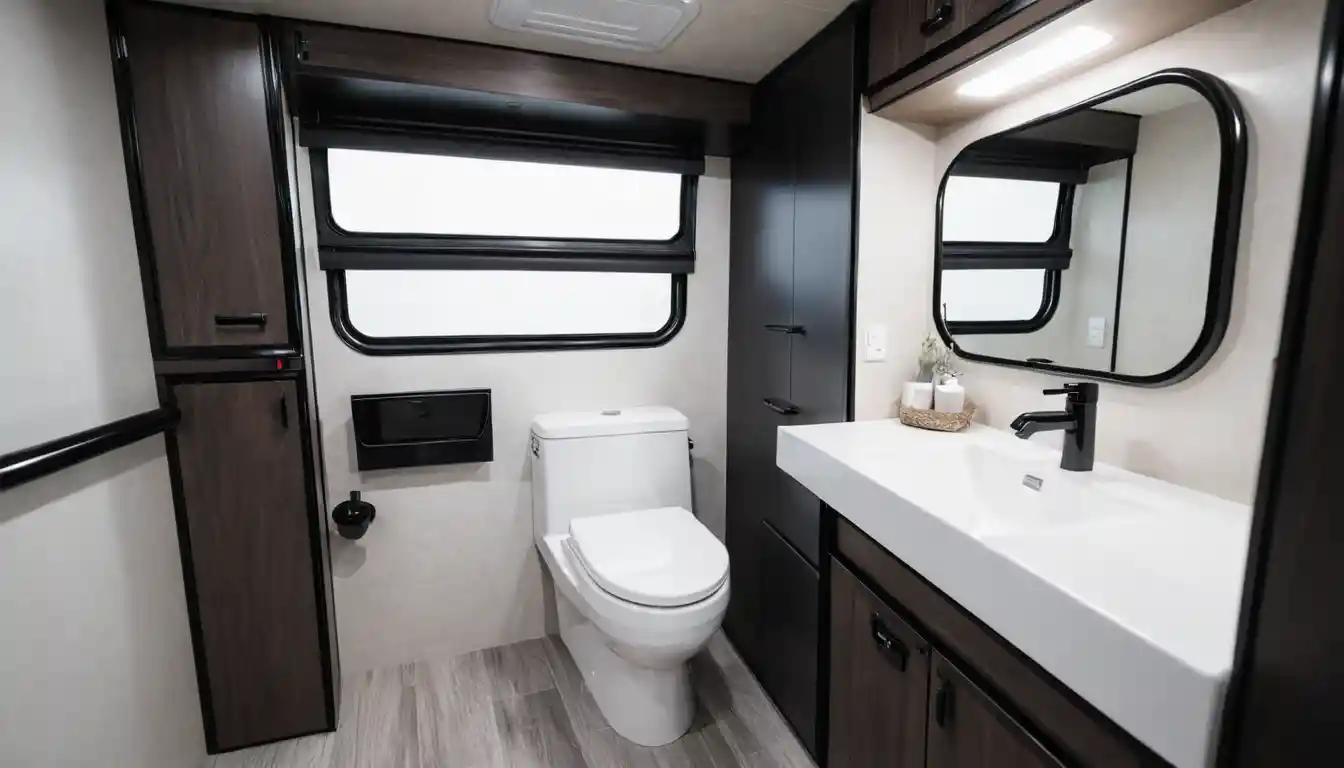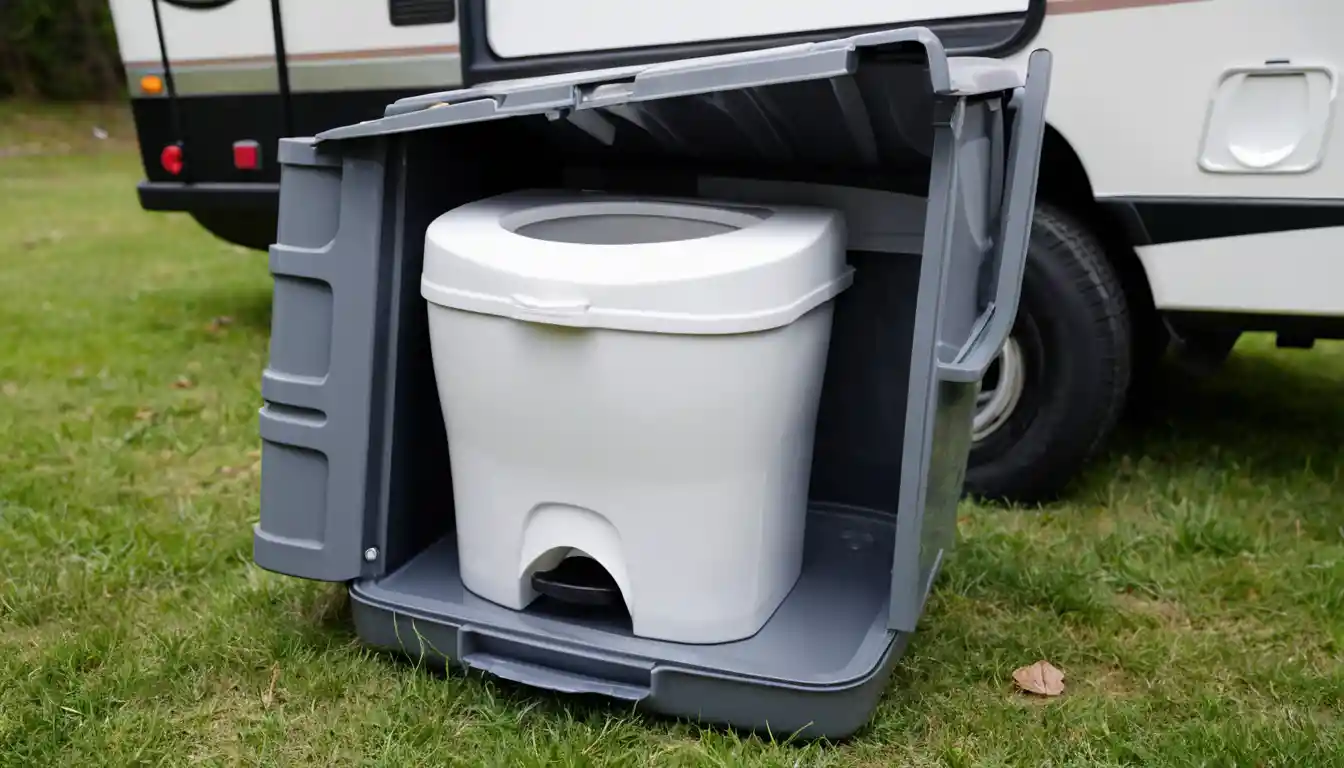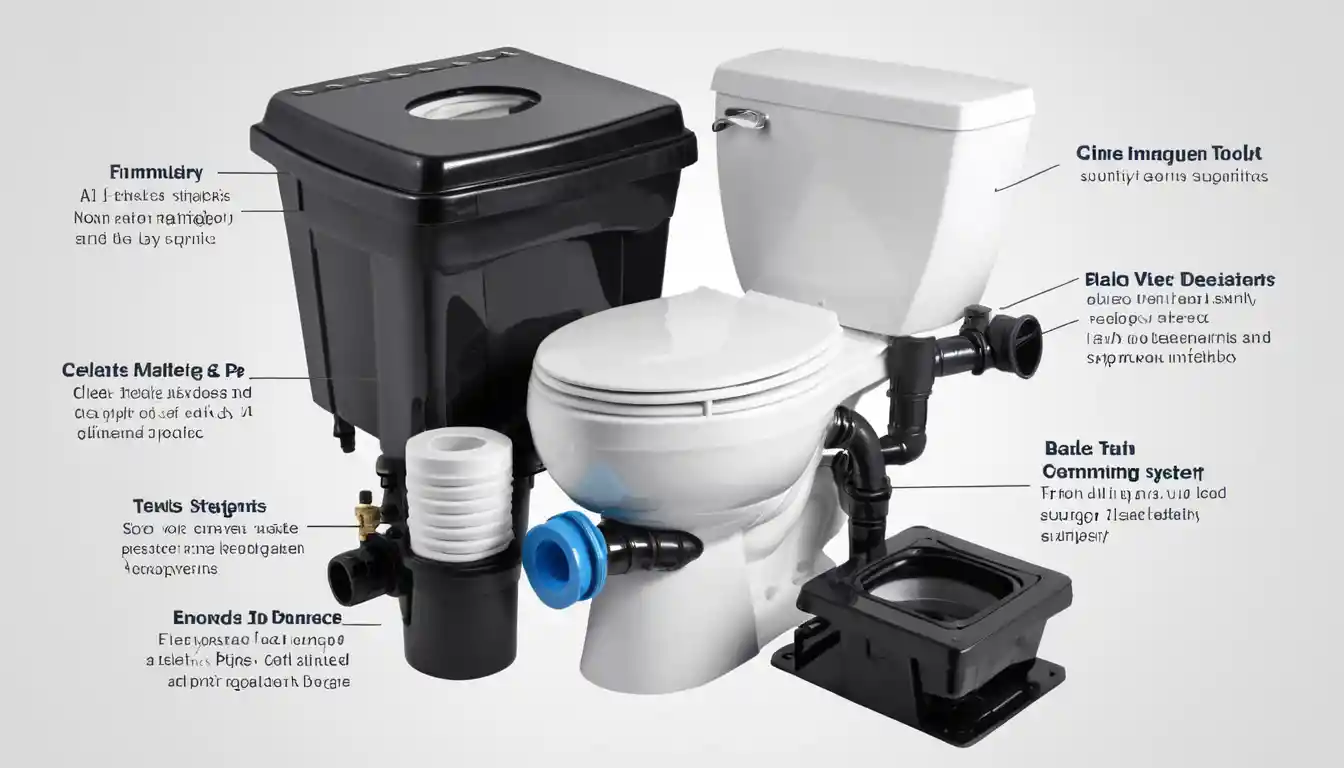When you’re out on the open road in your RV, enjoying the freedom of travel, you don’t want to worry about handling waste. Understanding how RV toilets work can make your trips more comfortable. It will also help you manage your RV plumbing system efficiently. In this guide, we will break down the mechanics of RV toilets, give maintenance tips, and explore the different types of RV toilet systems.
The Basics of an RV Toilet System
An RV toilet system is designed to be compact, efficient, and eco-friendly. It collects and disposes of waste while keeping your RV clean and odor-free.
In most RV toilets, waste is flushed into a holding tank called the RV black tank. This tank is a key component, storing waste until you can dispose of it at a designated station. You need to empty the black tank regularly to keep your RV toilet working properly.
RV Toilet System Diagram
A typical RV toilet system diagram shows how the fresh water tank pumps water into the toilet. The water flushes waste into the black tank. From there, the waste stays in the black tank until you empty it at a dump station. The system often includes a vent pipe to reduce odors and a valve to drain the black tank.
Different Types of RV Toilets
There are several different types of RV toilets, each designed for specific needs and preferences. Here’s an overview of the most common types:
Cassette Toilet
A cassette toilet is a compact, portable toilet that is often found in smaller RVs or campers. This type of toilet has a removable waste tank (the cassette) that you can easily remove and empty at a waste disposal site. While cassette toilets are easy to use and maintain, they may require more frequent emptying due to their smaller holding capacity.

Composting Toilet
A composting toilet offers an eco-friendly option by separating liquid waste from solid waste. The solid waste collects in a composting chamber where it breaks down naturally. This type of toilet doesn’t need water to flush, making it perfect for off-grid RV living. However, it requires more maintenance than traditional toilets. You will also need to dispose of the composted waste over time.
Incinerator Toilet
An incinerator toilet uses high heat to burn solid waste into ash. This toilet is ideal for RVers seeking a no-waste solution. It burns the waste and leaves behind only a small amount of ash, which is easy to dispose of. While it is convenient, the incinerator toilet needs a power source to operate. This requirement may limit its use in off-grid situations.
How Does an RV Toilet Work?
Now that we’ve covered the types of RV toilets, let’s dive into the mechanics of how they work. Most RV toilets work like household toilets but are built to fit the unique needs of an RV. When you flush the toilet, water from your RV’s water supply tank moves the waste into the black tank.
The waste is stored in the RV black tank until it can be emptied at a designated dump station. The black tank can hold both solid and liquid waste, and it’s important to use the right RV toilet paper that dissolves easily and doesn’t clog the system. Regular maintenance and cleaning of the black tank and toilet are essential for smooth operation.
How Do RV Toilets Work Diagram
To better understand how everything fits together, a how do RV toilets work diagram typically includes the following key components:
Freshwater tank: Provides the water necessary for flushing.
Toilet: The fixture where waste is deposited.
Black tank: Holds waste until it can be disposed of.
Drain valve: Allows waste to be emptied from the black tank.
Vent pipe: Releases odors outside the RV.
Maintaining Your RV Toilet
Proper maintenance is crucial for keeping your RV toilet and black tank functioning well. Here are some tips to ensure everything runs smoothly:

Use the Right Toilet Paper: Regular toilet paper can cause clogs in your RV toilet system. Be sure to use RV toilet paper, which is designed to break down easily and not create blockages in the black tank.
Keep the Black Tank Clean: Regularly flushing and cleaning the RV black tank will help prevent buildup and odors. Consider using tank treatment products to keep the tank in top condition.
Empty the Black Tank Regularly: It’s important to empty the black tank regularly to prevent waste from accumulating and causing problems. How often you need to empty it depends on the size of your tank and the number of people using the RV.
Check for Leaks: Over time, seals and valves may wear out. Always inspect your toilet system for leaks, and make necessary repairs promptly.
Ventilation: Make sure the vent pipe is clear to allow proper airflow and reduce odors inside your RV.
Frequently Asked Questions
What type of toilet paper should I use for my RV toilet?
It’s important to use RV toilet paper that is designed to dissolve quickly and prevent clogs. Regular toilet paper doesn’t break down as easily and can lead to blockages in the RV black tank, causing costly repairs or maintenance issues.
How Often Should I Empty the RV Black Tank?
The frequency of emptying the RV black tank depends on the tank size and how many people are using the RV. On average, you should empty the tank every 3-5 days or when it reaches about 2/3 full. Regularly emptying the tank prevents odor buildup and ensures everything runs smoothly.
Can I Use a Composting Toilet in My RV?
Yes, you can use a composting toilet in your RV. It’s a great option, especially if you prefer an eco-friendly and off-grid solution. A composting toilet separates solid and liquid waste, breaking down solids without needing water. However, keep in mind that composting toilets require more maintenance than traditional RV toilets. You must manage them carefully to avoid odors.
What is the difference between a cassette toilet and a traditional RV toilet?
A cassette toilet is a portable, compact toilet with a removable waste tank (cassette) that can be emptied easily at dump stations. It’s ideal for smaller RVs or for those who prefer more flexibility. In contrast, a traditional RV toilet is connected to a larger RV black tank for waste storage, which requires less frequent removal.
How can I prevent odors in my RV toilet?
To prevent odors in your RV toilet, ensure proper ventilation through the vent pipe, use tank treatments to control smells, and make sure the RV black tank is regularly emptied. Additionally, using the right RV toilet paper and cleaning the toilet system frequently can help maintain a fresh environment.
Conclusion
Understanding how RV toilets work is essential for any RV owner. Whether you have a cassette toilet, a composting toilet, or a traditional RV toilet, knowing the basics of how your system operates will help you maintain it properly and ensure that you can handle waste efficiently during your travels. By using the right RV toilet paper, maintaining your RV black tank, and keeping the system clean, you can enjoy a hassle-free RV experience every time you hit the road.





